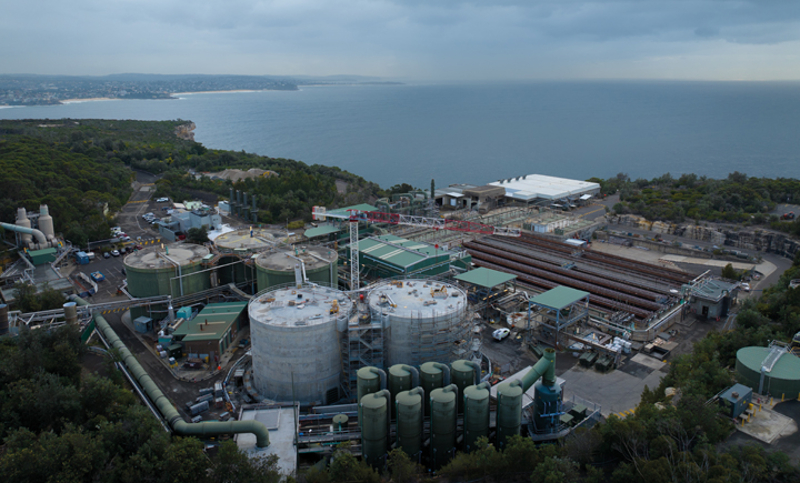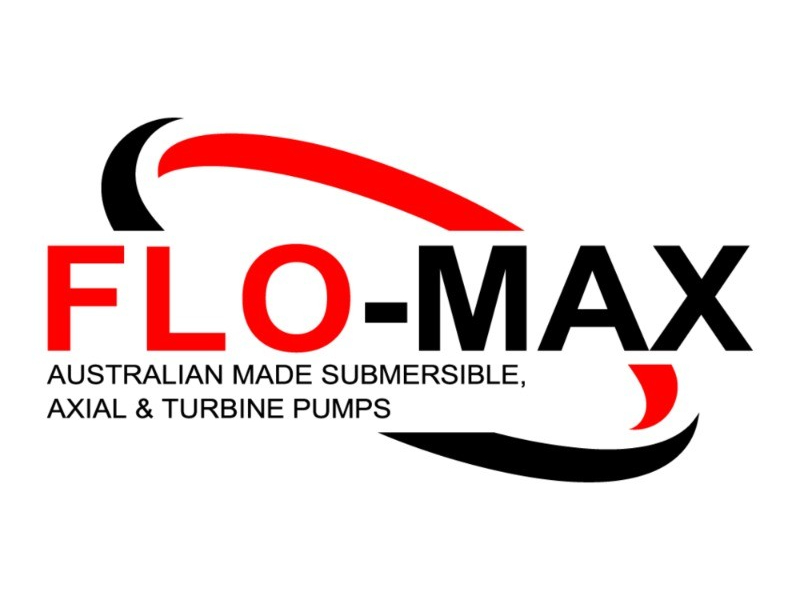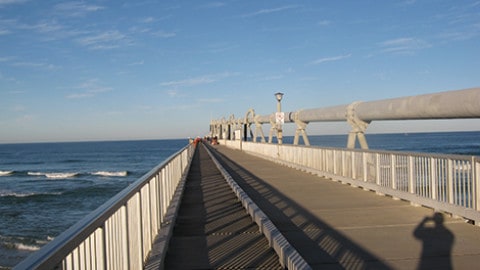By Steph Barker, Assistant Editor, Pump Industry Magazine
Sydney Water’s North Head Water Resource Recovery Facility has recently undergone a $94 million upgrade, including the installation of two digesters to treat wastewater and produce biosolids that can be used and repurposed as part of a circular economy. Here, we take a look at the facility and how pumps have played a crucial role in the upgrade process.
The North Head Water Resource Recovery Facility (WRRF) – previously known as the North Head Wastewater Treatment Plant – is one of Sydney’s largest and most integral water treatment facilities, processing around 336 million litres of wastewater every day and providing wastewater management services to over one million customers from Seven Hills in Sydney’s west, to Yagoona in the south and Ku-Ring-Gai and Collaroy in the north.
The North Head facility uses six raw sewerage pumps to process the wastewater, each approximately 64m high and with capacity to treat between 1,850–4,250L per second. Once treated, wastewater becomes two separate products: treated water and biosolids.
Biosolids are organic solids (sludge) that are left once the treated water is removed. The North Head WRRF produces about 12,000t of biosolids every year. The facility has been undergoing a $94 million biosolids upgrade, which began in 2021. The upgrade is designed to propel Sydney Water’s transition to a more sustainable, circular economy by improving equipment to produce better quality biosolids.
Currently, the biosolids produced are used as compost or fertiliser for forestry and mine rehabilitation. While these applications are ultimately positive in terms of recycling and sustainability, better quality biosolids mean better opportunities for reuse. Although composted biosolids are eventually used on land, the direct application of biosolids to farms and forestry is better for carbon neutrality than composting.
However, for biosolids to be able to be used in this way, they must be of a high quality – which can be difficult to achieve with standard wastewater treatment.
Discovering digestion
A key milestone was recently reached in the upgrade with the installation of two digesters. The digesters perform a somewhat similar process to the human stomach – a naturally occurring biological process in which large numbers of bacteria convert organic matter into methane and carbon dioxide in the absence of air. It’s a widely used biological process for treating wastewater solids as it stabilises the organic matter in wastewater solids, reduces pathogens and odours, and reduces the total solids/sludge quantity by converting part of the volatile solids fraction to biogas.
Sydney Water Senior Process Engineer, Matt Wood, explained, “Basically, we grow specific bugs that we want in there that convert some of the solids into methane. They break down the solids and take out the stuff that can be broken down and turn that into methane, which we then take off and use as biogas.
“They also do a process called stabilisation. That basically gets rid of all the pathogens and makes the biosolids nice and stable, so they don’t break down as much anymore, and then we’re able to take it out to land and it’s not as odorous. So by doubling your capacity, you get more stabilisation of the product.”
The anaerobic digestion process requires adequate mixing to ensure the sludge is processed correctly. Many digesters utilise hydraulic mixing, which recirculates the digester content through the use of an external pump network, most frequently using variable speed pumps. The hydraulic mixing can pump the digester contents from the lower half of the digester to the top of the digester to potentially stop the formation of a significant scum layer, which can be detrimental to digester operation.
Cultivating co-generation
The North Head WRRF uses cogeneration to meet some of its energy needs. Co-generation refers to a process that produces heat and energy at the same time. Methane gas, or biogas, is captured from the anaerobic digesters and pumped to power a combustion engine.
That engine then drives an electricity generator and produces heat to supply the plant’s process heating requirements. Mr Wood explained, “The digester helps us break down a lot of the solids and turn it into biogas. So once we have that biogas, we can then run that through these big engines. And co-generation means there’s two things that come from it.
“The first thing and most important thing is heat. And that heat we put back into the digester, because we’re trying to keep the digester at about 36 degrees – the same as human body temperature – which is what the bugs like to be able to do their thing and function well.
So we try and get a lot of that heat back in, which means we don’t have to use a lot of power to generate heat from the grid. “And then we create the biogas as a byproduct, which runs these big engines. The engines turn basically like a car engine, except massive, and then that engine rotates a turbine, and that engine runs off the biogas.
It means that we get to offset a lot of the energy that the plant would otherwise use from the grid. “In good years, it provides about 45 per cent of the plant’s energy usage, because we’ve got two co-gens at the site, and then also the hydroelectric generator as well. So the two co-gens generally generate between 13,000 and 15,000MgW hours a year,” he said.
In this process, pumps are integral to most of the steps involved. Pumps are the biggest consumer of power in the generation process, so for Sydney Water, being able to power pumps with renewable sources presents a huge reduction in both energy costs and emissions.
Furthermore, in the case of co-generation, the cycle of energy creation and energy use is entirely symbiotic, meaning that the biosolids digesters essentially power themselves.
Pumping up the power
Sydney Water said it is continuously looking to reduce its carbon footprint and working to identify alternative and renewable energy sources. At the North Head WRRF up to 58 per cent of the facility’s total energy needs currently come from renewable sources, primarily from hydroelectricity. It’s the first hydroelectric generator in the Southern Hemisphere that runs off wastewater.
The treated wastewater falls down a long drop shaft on its way to the deep water ocean outfall. The falling water has enough kinetic energy to drive a water-powered generator, which produces the hydroelectricity. While this method alone doesn’t provide enough power to run the entire facility, paired with other renewables sources, helps to provide a significant amount of power – North Head processes approximately 40 per cent of Sydney’s wastewater catchment, so there’s plenty of material to work with.
“I believe when they first installed it, they were told that it wouldn’t work and you couldn’t get it to happen – but we’ve managed to get it working and it does work very well. So basically what it does in the plant, there’s a big drop-off where the wastewater drops and falls vertically. And so we’ve got the hydroelectric turbine in that drop off that takes all that kinetic energy from the water and turns the turbine to generate power. We get about 10,000 to 11,000MgW hours a year from that,” Mr Wood said.
Mine rehabilitation
Apart from reducing its carbon footprint, Sydney Water is aiming to achieve a circular economy with its wastewater. The digesters have enabled the North Head facility to find further uses for the biosolids produced, including:
• Minimising the discharge of solids to oceans and rivers
• Recycling a valuable resource that helps minimise disposal to landfill
• Reducing the amount of chemical fertilisers used on farms
• Producing biogas used to generate renewable energy to power treatment facilities
Another key use for the biosolids is mine rehabilitation. Biosolids have been recognised as a beneficial organic soil amendment that can improve the long term success of mine rehabilitation programs.
Biosolids have been used in mine rehabilitation in the Hunter Valley for more than 20 years, providing increased nutrients and better soil quality for more effective plant growth. Because the digesters at the WRRF treat biosolids to a more pure, usable form, they can be used more frequently for this purpose.
“Basically when they set up a mine, they have a responsibility to restore the land once they’ve finished mining. And so as you can imagine with the mining process, it’s taking a lot of all the surface soil and everything away. So there’s basically not a lot left to be able to restore the land with.
So by using the compost and with the biosolids in it, you’re restoring essential microbial communities to the soil and you’re restoring soil structure so that you can grow things again where you wouldn’t be able to grow it otherwise,” Mr Wood said. “Biosolids are a massive piece in the circular economy.
Basically what it’s doing is restoring vital nutrients back to land where we take a lot of our food source from, and do a lot to pull down carbon from the atmosphere. For North Head, it goes towards land regeneration for mine rehabilitation. So basically what happens is the North Head biosolids go up to Muswellbrook and it gets composted there. The composting process is a mix of about five times green waste to one part biosolids.” The full upgrades to the North Head WRRF are expected to be completed in 2024.

















